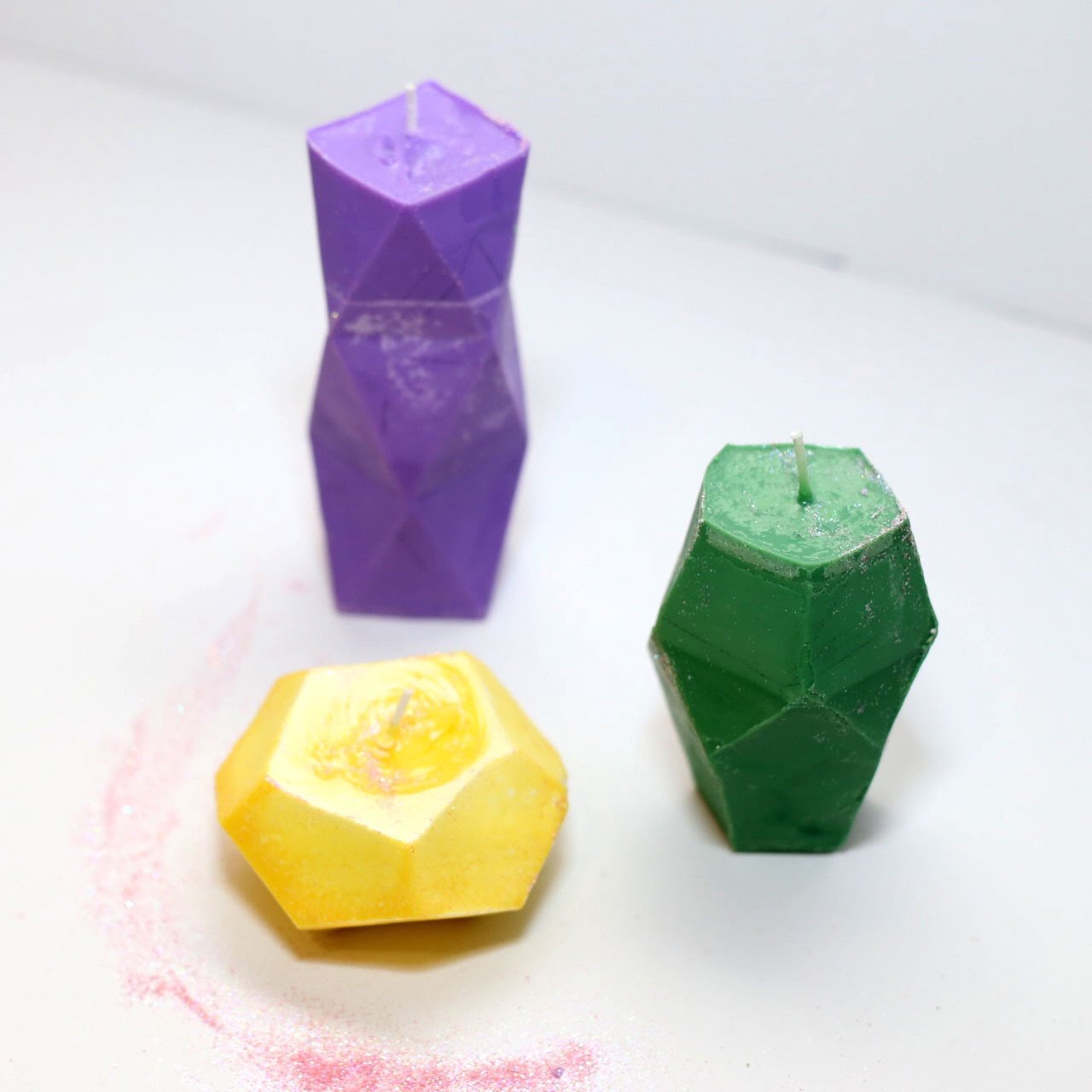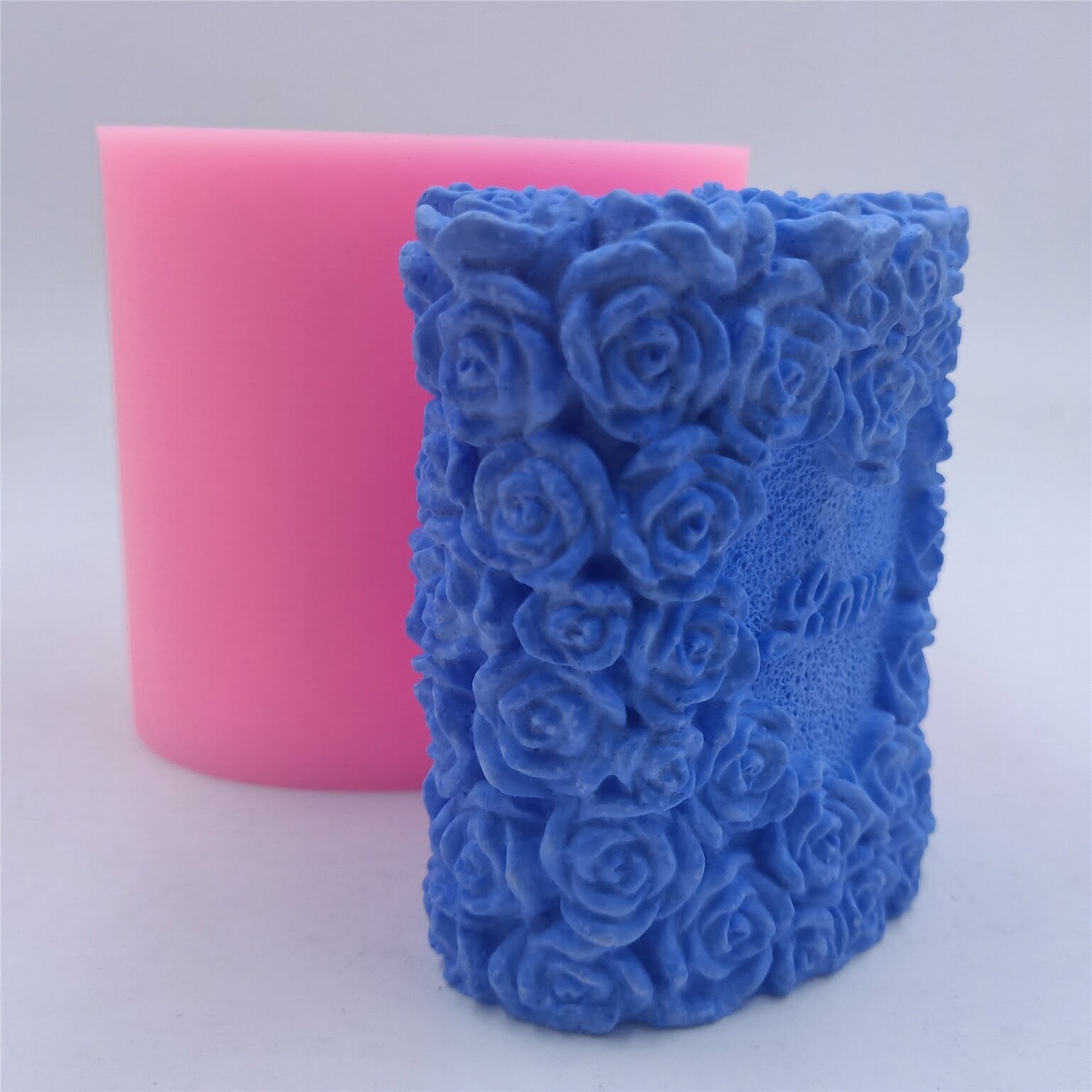Candle making is an age-old craft that has fascinated and delighted people for centuries. From flickering candlelight to soothing scents that fill the air, candles have become an essential part of our lives. But have you ever wondered what goes into making these beautiful creations? What are the secret additives used in candle making that give them their unique properties and characteristics?
In this article, we will delve deep into the world of candle making additives and reveal the mysteries behind them. From wax to fragrances, colorants to stabilizers, we will explore the different components that make up a candle and how these additives contribute to its overall quality and appeal.
But before we dive into the secrets lurking within a candle’s composition, let’s start with a brief overview of the basics of candle making. Understanding the foundational elements will provide us with a solid understanding of why additives are used and how they enhance the final product.
As we uncover these hidden ingredients and shed light on their roles in candle making, we will also address any potential health concerns associated with common additives. Furthermore, we will explore natural and eco-friendly alternatives for those who prefer a more sustainable approach to crafting candles.
So sit back, relax, and prepare to embark on a journey through the world of candle making additives as we unravel their secrets and reveal what truly makes a candle shine.
The Basics of Candle Making
Candle making is an ancient art that has been practiced for centuries. It involves melting wax, adding a wick, and allowing the mixture to cool and harden into a solid form. While the process may seem simple, there are actually many factors to consider when it comes to creating the perfect candle.
The first step in candle making is choosing the right type of wax. There are several options available, including beeswax, soy wax, and paraffin wax. Each type of wax has its own unique qualities and characteristics that can affect the performance and appearance of the finished candle.
Beeswax is one of the oldest types of wax used in candle making. It is a natural byproduct of honey production and has a sweet, honey-like scent. Beeswax candles burn longer than other types of candles and produce a bright, steady flame.
Soy wax is made from soybean oil and is an increasingly popular choice among candle makers. It is eco-friendly, renewable, and produces clean-burning candles with minimal soot or smoke. Soy wax also has excellent fragrance-holding capabilities, which allows for a stronger scent throw in scented candles.
Paraffin wax is perhaps the most controversial choice due to its petroleum-based origins. However, it remains one of the most widely used waxes in commercial candle making due to its affordability and versatility. Paraffin wax can be easily manipulated to create different textures and finishes in candles.
In addition to selecting the appropriate type of wax, candle makers also often use additives to enhance certain properties of their candles. These additives can include various types of oils, dyes or colorants, fragrances or essential oils, stabilizers such as stearic acid, emulsifiers like microcrystalline wax, and more.
Overall, understanding the basics of candle making lays a foundation for successful creations. By selecting the right type of wax and exploring the use of additives, candle makers can create candles with unique characteristics and qualities that delight the senses.
The Allure of Secret Additives
Candle making is an ancient craft that has evolved over time, and today, secret additives play a crucial role in creating the perfect candle. In this section, we will explore why these additives are used and their importance in the candle making process.
One of the primary reasons for using secret additives in candle making is to enhance the performance and quality of the finished product. Additives can improve scent throw, burn time, color vibrancy, and even help with the overall stability of the candle.
For example, stearic acid is commonly used as a hardening agent to prevent candles from getting too soft or melting too quickly. These additives provide candle makers with greater control over their creations and allow them to create unique and desirable candles.
Another reason for using secret additives is to achieve certain characteristics that would be difficult to obtain solely from natural ingredients. For instance, synthetic dyes are often added to candles to achieve vibrant and consistent colors that may be challenging to achieve with natural colorants alone. Similarly, fragrances and essential oils are commonly used not just for their scents but also for their ability to blend well with other ingredients and enhance the overall sensory experience of burning a candle.
Furthermore, secret additives are used in candle making for practical purposes such as improving burn consistency and increasing shelf life. Microcrystalline wax, a lesser-known emulsifier, is often added to candles to help blend different waxes together, resulting in a smoother texture and better adherence of fragrance oils. These additives ensure that the candles burn evenly without tunneling or pooling excessively while also maintaining their texture over time.
Overall, secret additives play a vital role in candle making by providing various benefits like improved performance, enhanced aesthetics, and increased functionality. Candle makers carefully select these additives based on their desired outcomes and strive to create unique products that stand out in terms of quality and appeal.
| Advantages of Secret Additives in Candle Making | Examples |
|---|---|
| Enhanced performance and quality of candles | – Stearic acid as a hardening agent |
| Achieving desired characteristics that are difficult to obtain naturally | – Synthetic dyes for vibrant colors |
| Improved burn consistency and shelf life | – Microcrystalline wax as an emulsifier |
Section Break
Candle wax additives play a crucial role in the candle-making process and can significantly impact the quality and performance of the final product. In this section, we will demystify the different types of candle wax additives and explore their purpose and effects.
Beeswax: Nature’s Secret Ingredient in Candle Making
Beeswax is a popular choice among candle makers for its natural properties and benefits. It is known for its ability to create a longer, cleaner burn with minimal soot production. Beeswax also has a subtle honey-like scent that adds a unique aroma to candles. Additionally, beeswax acts as a natural air purifier by releasing negative ions when burned.
In the making of beeswax candles, some common additives include:
- Coconut Oil: Adding coconut oil helps to increase the scent throw of beeswax candles while also improving their texture.
- Palm Wax: Palm wax can be blended with beeswax to create harder candles that are less likely to melt in warmer environments.
Soy Wax: Uncovering the Hidden Additives
Soy wax has gained popularity in recent years due to its renewable, biodegradable, and eco-friendly nature. When it comes to soy wax additives, there are several options available:
- Vegetable Stearic Acid: By adding stearic acid to soy wax, candle makers can enhance the overall performance of their candles. Stearic acid helps to increase the melting point of soy wax, resulting in longer burning times.
- Vybar: This additive is often used to improve fragrance retention and enhance color vibrancy in soy wax candles.
Paraffin Wax: The Controversial Choice and Its Surprising Additives
Paraffin wax is perhaps the most controversial choice among candle makers due to its petroleum-based origin. While paraffin wax itself does not require additional additives for basic candle-making, there are some options available for those who still choose to work with this wax:
- UV Stabilizers: To prevent color fading and maintain the quality of paraffin candles, UV stabilizers can be added. These additives protect the candle from sunlight exposure.
- UV Inhibitors: Similar to UV stabilizers, UV inhibitors minimize the impact of sunlight on paraffin candles by absorbing harmful ultraviolet radiation.
By understanding the different types of additives used in candle wax, you can make informed decisions when crafting your own candles. Whether you prefer natural options like beeswax or eco-friendly alternatives like soy wax, these additives can help you achieve the desired performance and aesthetic appeal for your creations.
Section Break
In the world of candle making, fragrances and essential oils play a crucial role in creating a captivating sensory experience for users. Beyond just providing a pleasant scent, these additives add depth and complexity to candles, enhancing the overall ambiance they create. Let’s delve into the fascinating world of fragrances and essential oils in candle making.
Fragrances in Candle Making: Beyond the Scent
When it comes to fragrances in candle making, there is an array of options available. Fragrance oils are commonly used as additives because they offer a wide range of scents that cannot be achieved through essential oils alone. These oils are created by combining various synthetic or natural ingredients to replicate specific smells such as fresh linen, vanilla, or lavender.
Fragrance oils are known for their strong scent throw, meaning they can release an intense fragrance when the candle is burned. This characteristic makes them particularly popular for candles intended to fill larger spaces with aroma. Additionally, fragrance oils have a longer shelf life compared to essential oils since they are more stable and less prone to oxidation.
Essential Oils: The Natural Blends with Additives
For those seeking a more natural approach, essential oils provide an excellent alternative in candle making. Derived from plants through processes like steam distillation or cold pressing, essential oils offer both aromatherapy benefits and captivating scents. However, it’s important to note that essential oils alone may not provide strong enough scents for larger candles or open spaces.
To enhance the scent profile and improve performance, some candle makers choose to blend essential oils with fragrance enhancers such as dipropylene glycol (DPG) or other solvents. These additives help stabilize the fragility of certain essential oil molecules and allow for a wider variety of scents without compromising their therapeutic properties.
Using essential oil blends with additives ensures that candles deliver long-lasting aroma while maintaining the potential health benefits associated with pure essential oils. It’s crucial to carefully research and select high-quality essential oils and fragrance enhancers to ensure the desired combination of a captivating scent and therapeutic value.
Section Break
Coloring Candles: The Art and Science
Adding color to candles is not only a way to enhance their aesthetic appeal, but it also allows for creativity and customization. However, achieving the desired color requires more than simply adding a pigment to the wax. In this section, we will explore the art and science of coloring candles, including the use of synthetic dyes and natural colorants as additives.
Synthetic Dyes: Adding a Pop of Color with Hidden Additives
Synthetic dyes are commonly used in candle making due to their vibrant and consistent colors. These dyes are often made from petroleum-based compounds and can come in liquid or powder form. However, what many candle makers may not realize is that these synthetic dyes can contain hidden additives.
Some synthetic dyes may incorporate additives such as binding agents or solvents to improve their stability and dispersion in the wax. These additives can help prevent the dye from separating or clumping, ensuring an even distribution of color throughout the candle. It is important for candle makers to read product labels carefully to understand what additives may be present in their chosen synthetic dye.
Natural Colorants: Uncovering the Secrets of Plant-Based Additives
For those who prefer a more natural approach to coloring candles, plant-based colorants offer an alternative option. Natural colorants are derived from various sources such as fruits, vegetables, flowers, and even minerals. These additives provide a more eco-friendly choice for candle makers who want to avoid synthetic ingredients.
Plant-based colorants often require additional steps in the candle making process due to their different properties compared to synthetic dyes. For example, some natural colorants may need to be infused into oils or melted directly into the wax before pouring it into molds.
Additionally, certain plant-based additives may affect other aspects of the candle’s performance, such as its scent throw or burn time. Candle makers need to experiment and test their chosen natural colorants to achieve the desired results.
A Closer Look at Candle Making Stabilizers and Emulsifiers
Stearic Acid: The Marvelous Stabilizer
One of the most commonly used stabilizers in candle making is stearic acid, a natural fatty acid that comes from animal and vegetable fats. Stearic acid can be found in various forms, including powder, flakes, or beads. It is known for its ability to enhance the opacity, hardness, and melting point of candles.
When stearic acid is added to candle wax, it increases the overall firmness of the wax and helps prevent excessive dripping or melting during burning. This makes it particularly useful for creating pillar candles or other types of candles that require structural integrity. In addition, stearic acid can also improve the scent throw by allowing a more even distribution of fragrance throughout the candle.
For those who prefer to make their own candles at home, stearic acid is readily available in many craft stores and online retailers. It is important to note that when using stearic acid as a stabilizer, proper handling and safety precautions should be followed. This includes wearing protective gloves and eyewear during the handling process.
Microcrystalline Wax: The Lesser-Known Emulsifier
While stabilizers like stearic acid focus on enhancing the structure and performance of candles, emulsifiers play a different role in candle making. Microcrystalline wax is a type of petroleum-based wax that serves as an emulsifier in candle formulations.
Emulsifiers help blend ingredients that are otherwise incompatible with each other – like oil and water – into a stable mixture. In candle making, microcrystalline wax acts as an emulsifying agent by binding together fragrances and other additives with the wax base.
Aside from its emulsifying properties, microcrystalline wax also contributes to the texture and appearance of candles. It gives them a smooth finish and helps reduce the risk of frosting, which is a common issue that can occur during the cooling process.
It’s important to consider that microcrystalline wax is derived from petroleum, which may be a concern for environmentally-conscious candle makers. Therefore, opting for natural or alternative emulsifiers may be a more sustainable choice for those seeking eco-friendly alternatives in candle making.
The Dark Side of Candle Making Additives
Potential Health Risks of Common Additives
While candle making additives may enhance the quality and appearance of candles, it is important to be aware of potential health risks associated with their use. One common additive found in many candles is phthalates, which are chemicals used to soften plastics and increase fragrance strength.
Phthalates have been linked to a variety of adverse health effects, such as hormonal disruptions, reproductive issues, and respiratory problems. When candles containing phthalates are burned, they can release these harmful chemicals into the air, compromising indoor air quality.
Another concerning additive commonly used in candles is lead. In the past, lead-core wicks were frequently used in candle making because they helped to keep the wick upright and promote even burning. However, it has since been discovered that lead-core wicks release toxic lead fumes when burned. Inhaling these fumes can pose serious health risks, especially for pregnant women, children, and individuals with respiratory conditions.
To address these health concerns, many candle makers have turned to natural and eco-friendly alternatives. Instead of synthetic fragrances containing phthalates, they opt for using essential oils derived from plants for scenting their candles. Essential oils not only provide a natural fragrance but also offer therapeutic benefits depending on the specific oil used.
Natural and Eco-Friendly Alternatives: Candle Making without Secrets
In addition to avoiding harmful additives like phthalates and lead-core wicks, there are other natural substitutes available for those who wish to make candles without any hidden ingredients. For example, using plant-based waxes such as soy or beeswax eliminates the need for petroleum-derived paraffin wax which often contains additives like UV inhibitors and colorants.
When it comes to coloring candles naturally and safely, botanical options are gaining popularity among candle makers. They utilize plant-based colorants such as powdered spices (e.g., turmeric or paprika), dried flowers (e.g., lavender buds or rose petals), and even natural clays to infuse vibrant hues into their candles. These natural colorants not only add beauty to the candles but also offer an eco-friendly alternative to synthetic dyes.
By choosing natural alternatives and being mindful of potential health risks associated with certain additives, candle makers can create healthier and more sustainable products. Additionally, consumers can make informed choices by looking for candles made with natural waxes, essential oils, and plant-based colorants. By shedding light on the dark side of candle making additives and exploring safer alternatives, we can enjoy the ambiance and fragrance of candles while protecting our health and the environment.
Conclusion
In conclusion, the world of candle making additives is no longer shrouded in mystery. Through this exploration, we have unveiled the hidden ingredients and secrets behind various types of candles. From nature’s secret ingredient, beeswax, to the controversial paraffin wax with its surprising additives, we have discovered that there is much more to candles than meets the eye.
We have also delved into the role of fragrances and essential oils in candle making. Beyond their scents, these additives often include hidden blends that enhance the aromatic experience. Additionally, we have explored the art and science of coloring candles, uncovering both synthetic dyes and natural colorants that bring vibrant shades to our creations.
Furthermore, we have shed light on stabilizers and emulsifiers used in candle making. Stearic acid has proven to be a marvelous stabilizer while microcrystalline wax conceals itself as a lesser-known emulsifying agent. These additives play an essential role in creating balanced and long-lasting candles.
However, it is important to note that while hidden ingredients may enhance the aesthetic appeal and performance of our candles, they can also pose potential health risks. It is crucial for candle makers and consumers alike to be aware of these concerns. Thankfully, there are alternative options available for those seeking natural and eco-friendly alternatives.
Frequently Asked Questions
What additives can you add to candles?
When it comes to additives for candles, there are several options available to enhance their performance and aesthetic appeal. One commonly used additive is fragrance oil, which adds a pleasant scent to the candle when burned. This allows for a personalized touch and can create a soothing or refreshing ambiance depending on the chosen scent.
Another popular additive is color dye, which adds vibrant hues to the candle wax, making it visually appealing when lit. Additionally, some people choose to add essential oils for both fragrance and therapeutic properties. These additives can range from lavender oil for relaxation to citrus oil for an energizing effect.
What natural additives make candles burn longer?
If you’re looking to make candles burn longer naturally, there are a few key additives that can help maximize their burn time. One effective option is stearic acid, a natural additive derived from vegetable oils and fats. Stearic acid increases the melting point of the wax, allowing it to burn more slowly and thus elongating the candle’s lifespan.
Beeswax is another natural additive known for its ability to prolong burning time due to its higher melting point compared to traditional paraffin wax candles. By incorporating these natural additives into your candle-making process, you can enjoy longer-lasting candles.
What is universal additive for candle making?
While there isn’t necessarily a universal additive for candle making that applies in all cases, one widely used ingredient that provides numerous benefits is soy wax. Made from hydrogenated soybean oil, soy wax has become increasingly popular due to its eco-friendly nature as well as its ability to offer longer burn times and cleaner combustion compared to traditional paraffin wax.
Soy wax also has excellent fragrance-holding qualities and can easily be blended with other waxes or additives such as essential oils or color dyes for customization purposes. Its versatility makes soy wax a common choice among many candle makers seeking high-quality results.

Welcome to my candle making blog! In this blog, I will be sharing my tips and tricks for making candles. I will also be sharing some of my favorite recipes.





